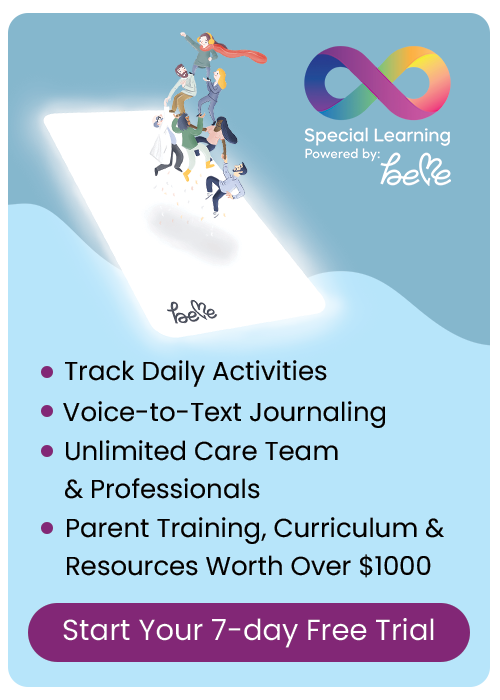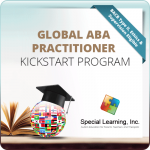Blog Categories
- ADHD
- Applied Behavior Analysis
- Autism Awareness
- Autism Service Providers
- Case Studies
- Dignosis
- Classroom Management
- Credentials
- Ethics
- Family Matters
- FAQs About LIVE Events
- Financial Planning
- Holiday Planning
- IEP's
- Panelists
- Private Equity in Autism & ABA Industry
- Psychopharmacology
- Sensory Processing Disorder
- Speech and Communication
- Subject Matter Experts
- Summer Planning
- Transition Planning
Is ABA therapy only or is it a teaching method too?

Is ABA therapy only or is it a teaching method too?
Teaching is an overwhelming job. If you teach children with Autism and other special needs, the job becomes much times harder. This is true whether you are in the U.S. or like me, in the Dominican Republic. With all the skills and content that our students need to learn, it can be very overwhelming to deal with behavior issues in the classroom. Indifference, lack of motivation and disruptive behaviors are only a few of the issues that teachers have to deal with every day. With students with Autism or other special needs, some consequences appear to be no longer useful, motivation seems to be impossible to build, disrespectful behaviors, off task, undesirable behaviors and so on are things that teachers deal with every day. Everyone in the classroom is interested in all kinds of things other than class content and get distracted with thoughts, situations and other things going on in class. I teach in an inclusive school where all classrooms have students with all kinds of disabilities. Autism, ADD, ADHD, Down Syndrome, Intellectual Disability, Paralysis, Language Disabilities and so on, are some of the diagnosis we have in our classroom. I am a lifelong learner and am always looking for ways to become better at my job. I found out about ABA reading and investigating ways of getting significant results with students with Special Needs. After reading about how effective ABA is with kids with Autism and other special needs, I looked all over the Internet to find information on how to learn to use ABA from where I live – Dominican Republic – where there is nothing about ABA.
I took a 10 week course from Special Learning’s training list. Since they offer this in an online format using recorded webcasts, it was easy for me to fit this into my schedule. While I was taking the course, I started to use some ABA principles in my classrooms. The results were amazing! Immediately after using some basic ABA techniques, my students started actively participating, listening and paying attention. Disruptive behavior started decreasing; I called it “the magic of ABA”. I have different types of students, but the environment in all my classrooms started changing. It started to become easier for me to teach them and for them to learn, even fun. Disruptive behavior were in the past. My students loved being in class. Other teachers started asking me how could I have the most difficult group of students in one of my classrooms and still manage to have them under control. ABA principles and techniques that were useful with a group of students were great for a different group and vice-versa.
Classrooms are brimming with different kinds of details, that in order to have the right approach, teachers must deal with them. Unfortunately, many times, teachers don’t have the skills, techniques, strategies or methods to do so.
ABA is the science of Applied Behavior Analysis. Most people think that ABA is just used in therapy and treatment one by one, but the truth is, it’s being used in classrooms and teachers are seeing great results, including myself.
Some of the benefits of using the principles of ABA are:
- Building motivation in the students
- Making students actively participate in class
- Giving students options to be involved in their learning process
- Decreasing disruptive behaviors in class
- Providing a good amount of opportunities to give the right answers.
- Builds a participation system where everyone can respond in their own way
- Give the students the opportunity to earn reinforcements
- Build a system where students can accept their consequences when they lose privileges
- Improve learning by using differing ABA strategies
Inclusive is the new education style, there are no longer students that can learn and students that cannot.
Education is for everybody. Every student should be able to be in a classroom learning with their peers. There are students that need to be working all the time, doing “something”; there are students that just need to be listening to you; there are students that need to be moved around the classroom in order to focus, students that need to talk to learn, students that prefer to read other than raising their hands, others that need to be doing different things at the same time to keep up with the teacher, and so on…
Some students need an instructor right by their side, other students just need to be near the teacher.
With classrooms full of students with different needs, it’s a challenging task which gets even worse when you don’t have the right strategies to deal with all the different facets of learning styles. If you are one of those teachers who wants to do what’s best for their students in becoming more effective to achieve the objectives, but you also have a very restricted schedule, I encourage you to go to the Special Learning website and learn more about their webcast trainings, teaching materials, virtual consultation with a BCBA and more that they offer and see the result in your own classrooms with all your students.The moment you start applying strategies and principles of ABA, I assure you will experience what I call “The Magic of ABA”
RECOMMENDED PRODUCTS
Global ABA Practitioner Kickstart Program
Build Your Own CE Library – Gianna Apicella (20 CEs)





